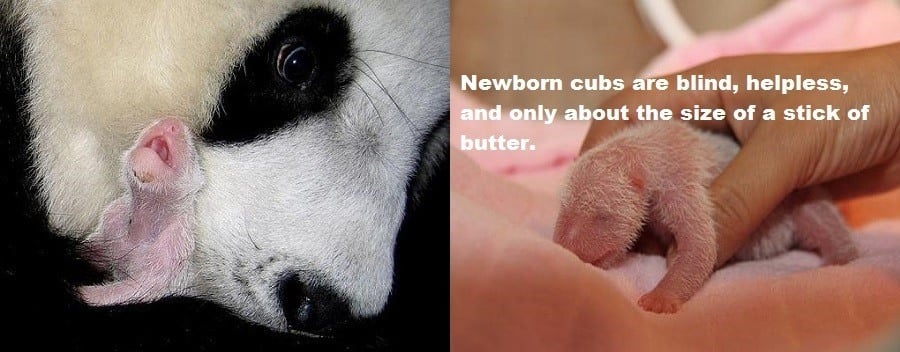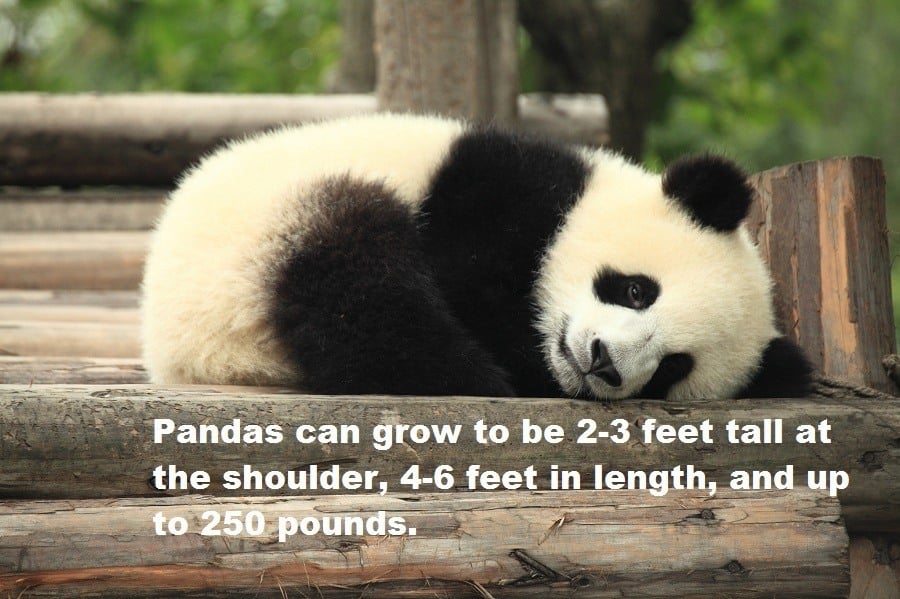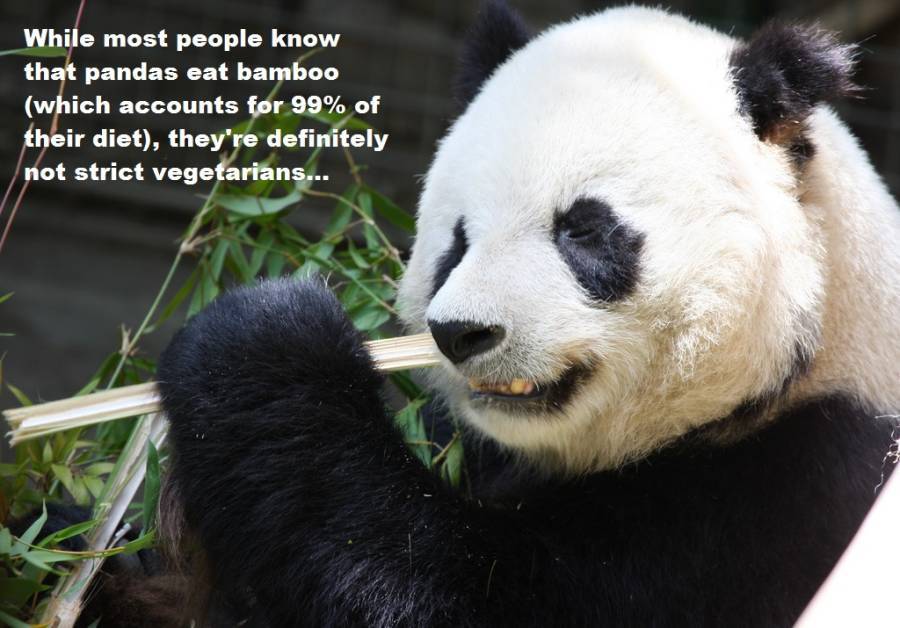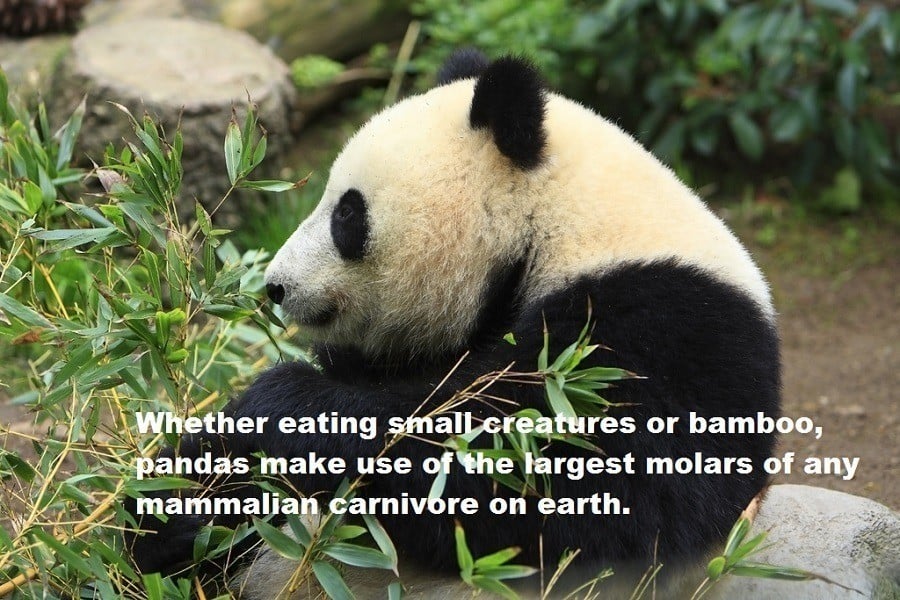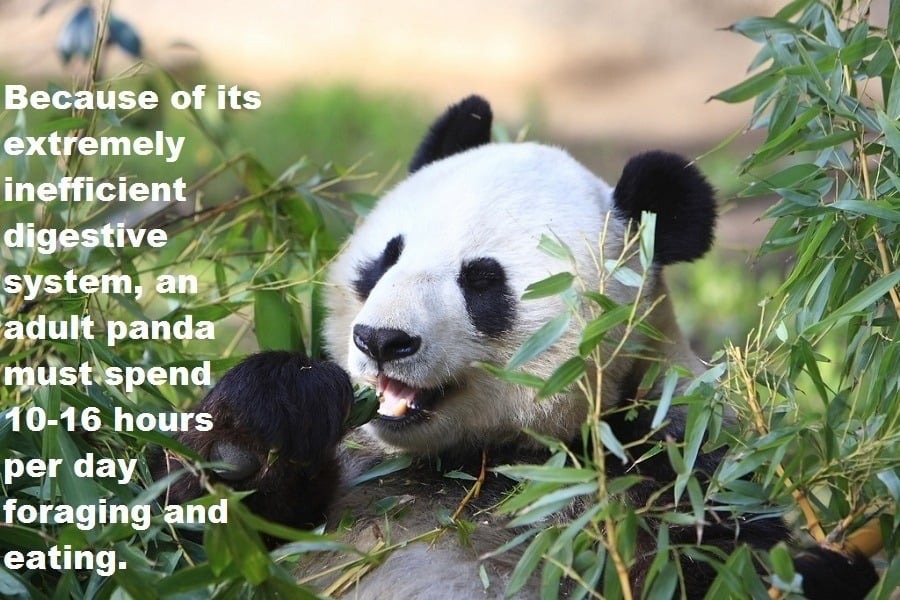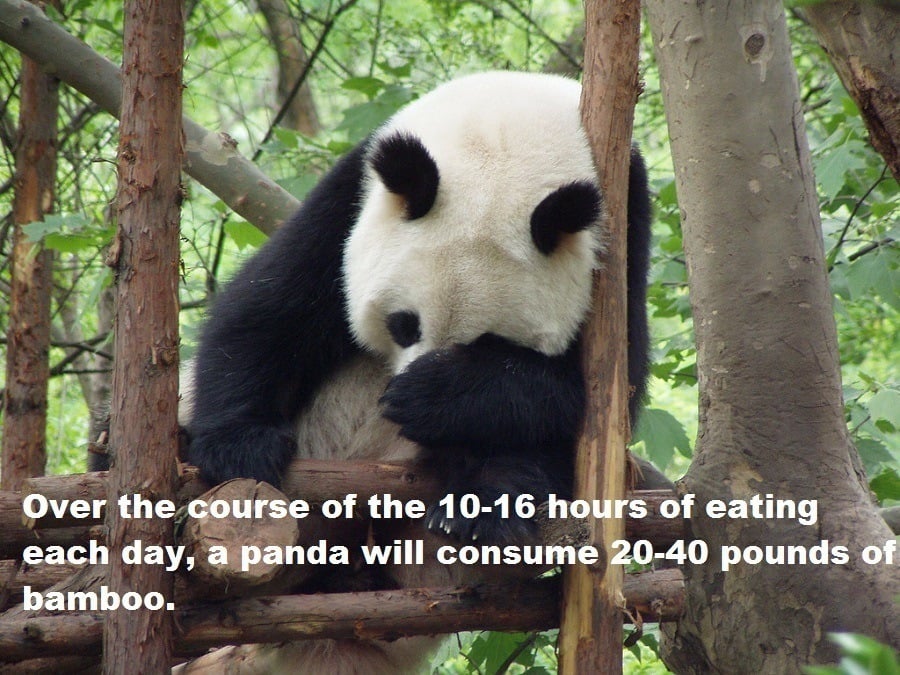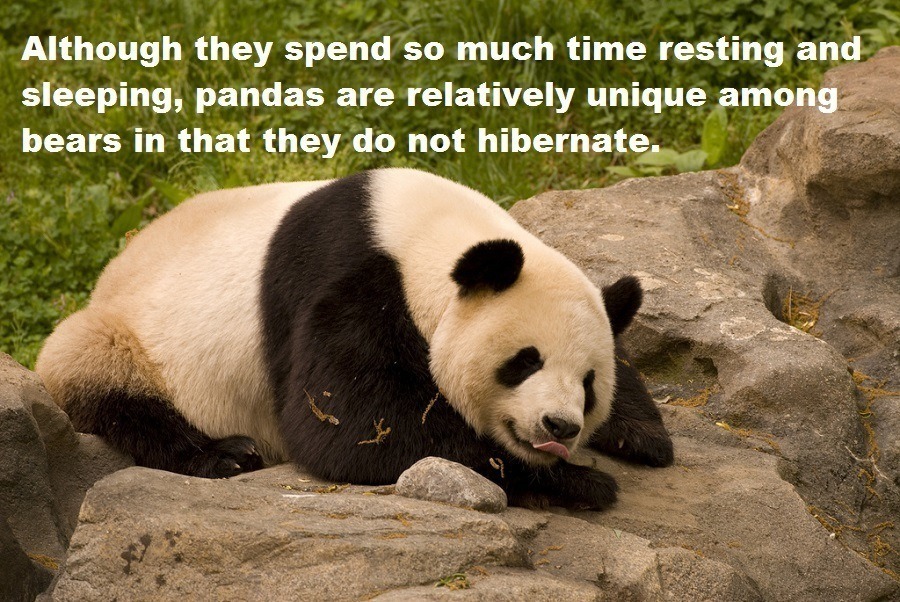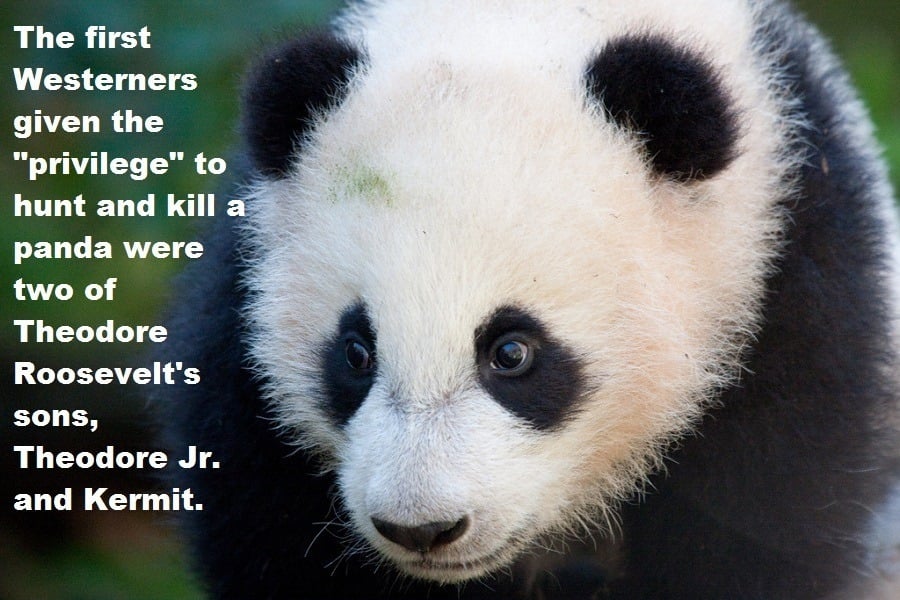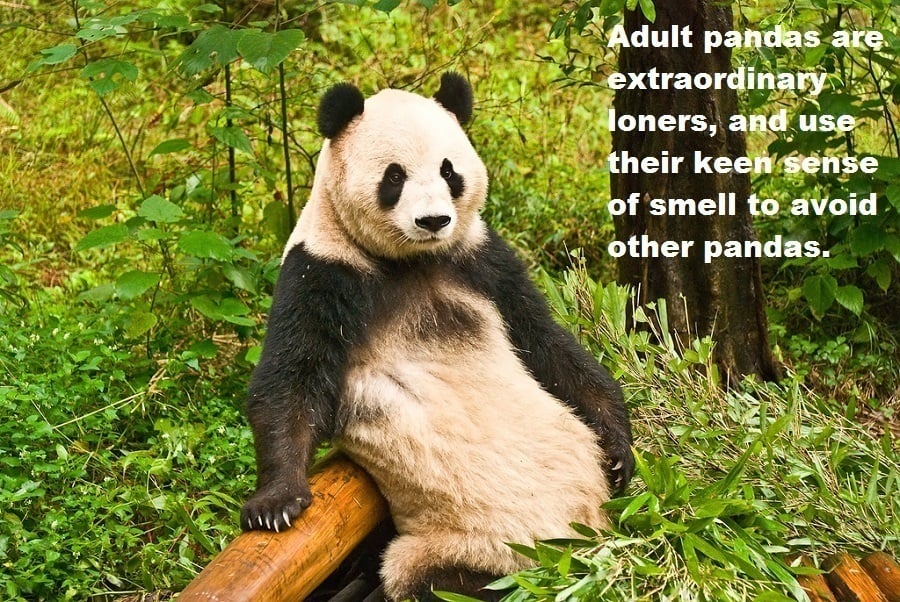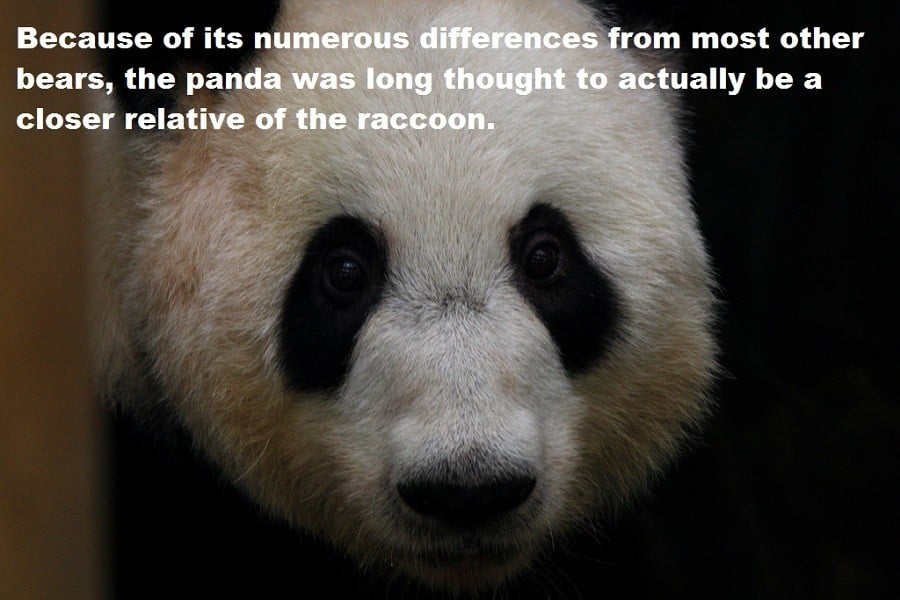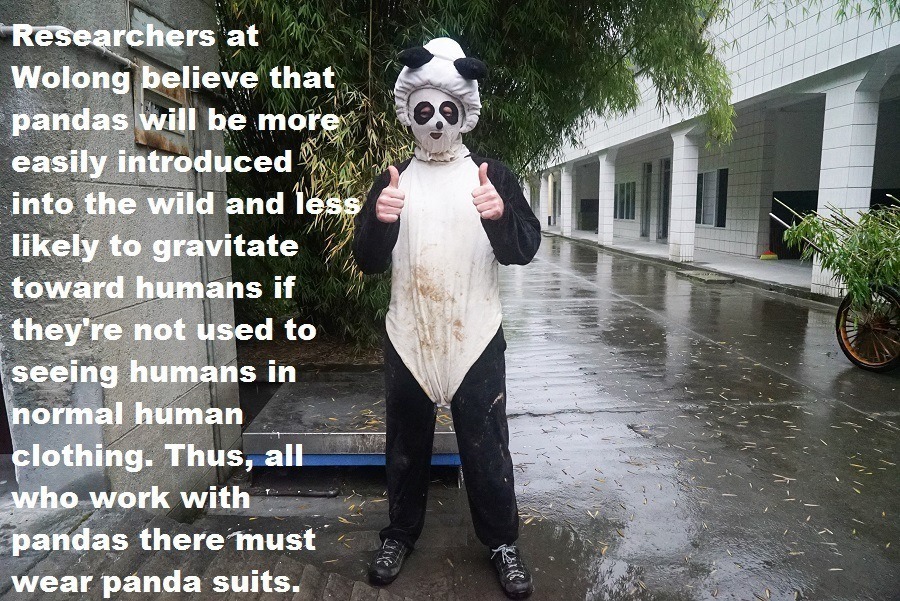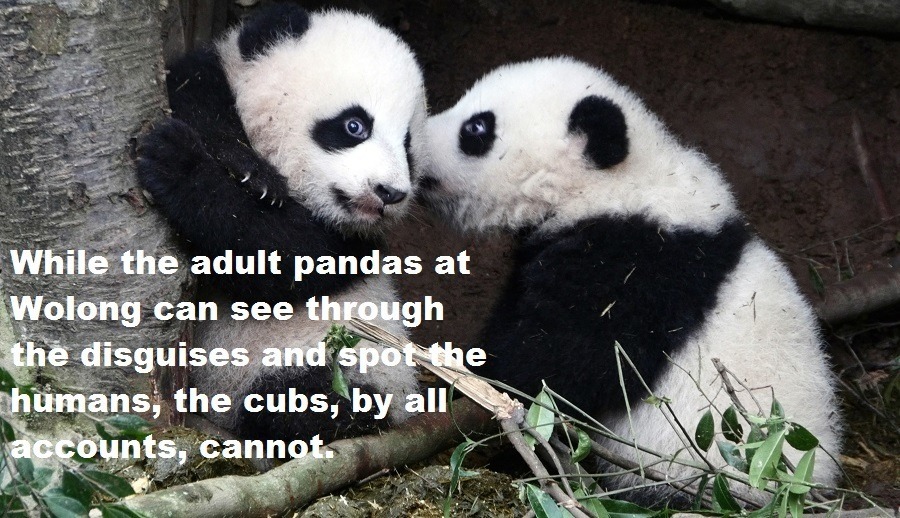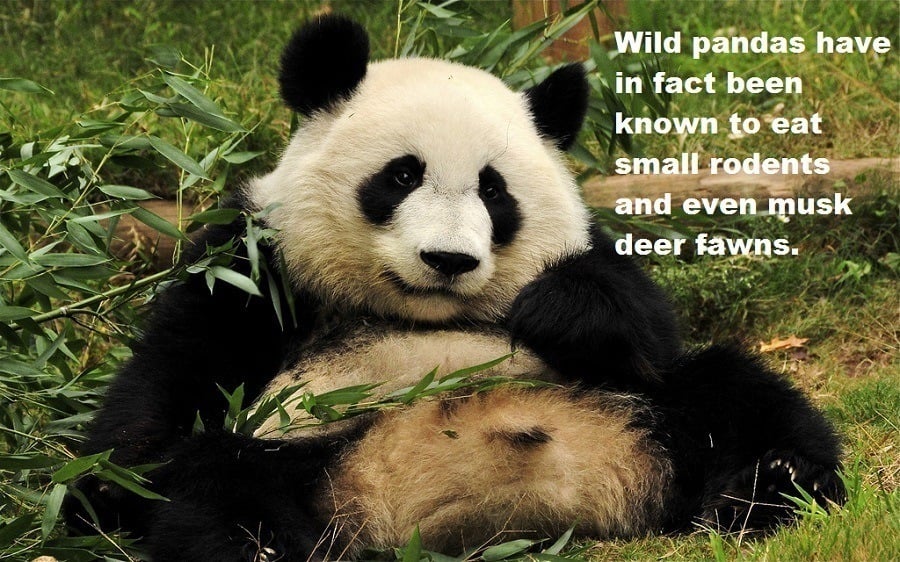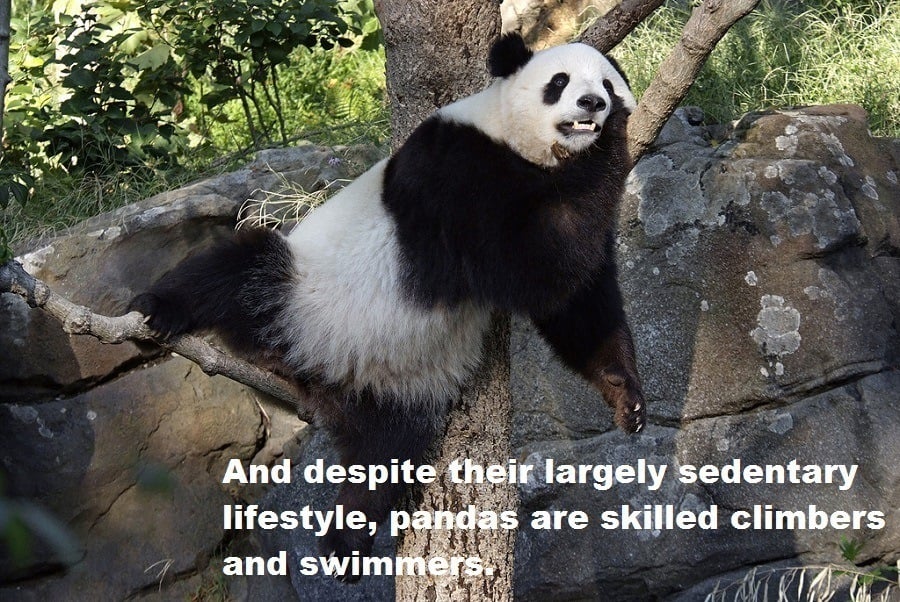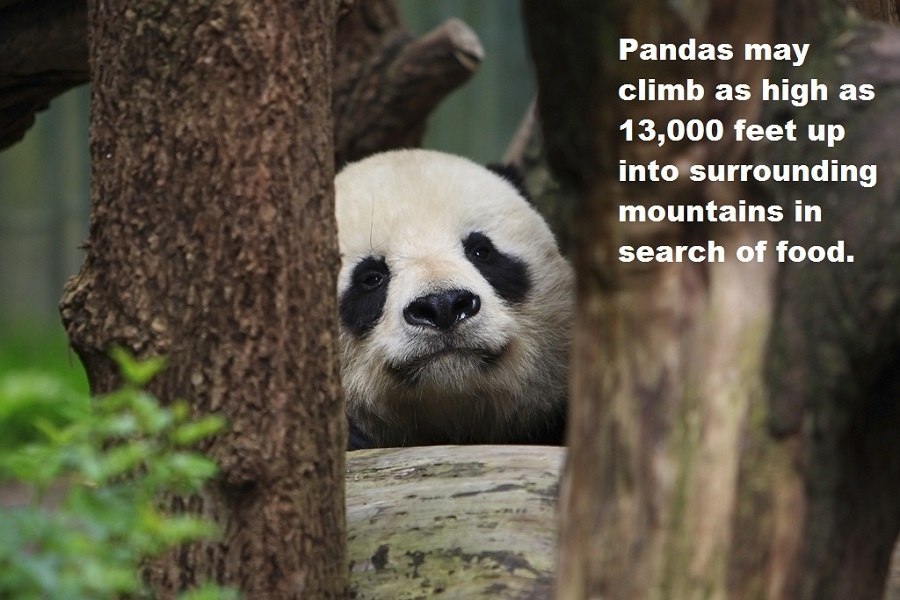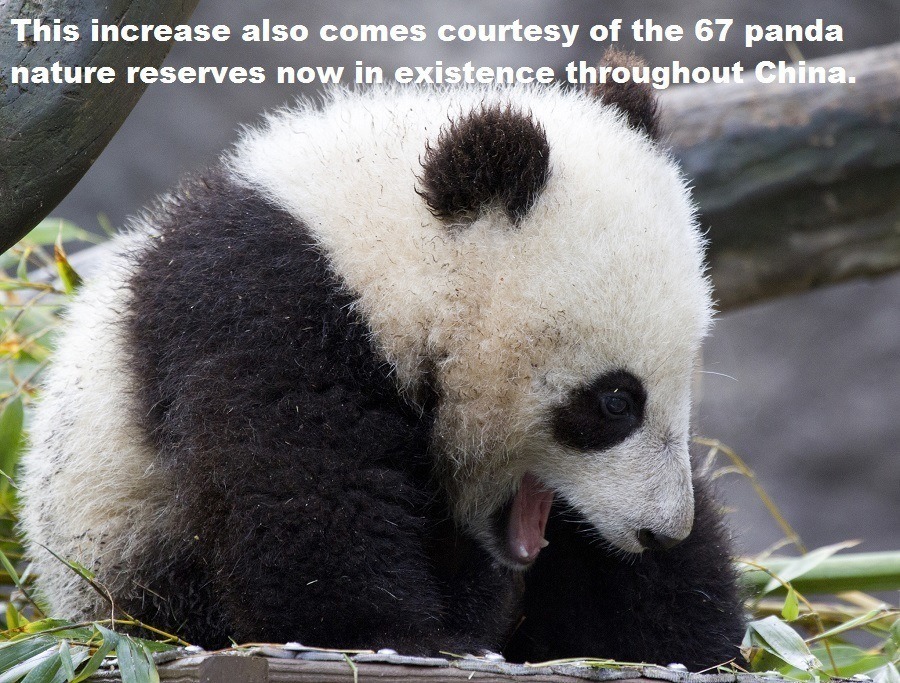From why they use Viagra to why we once drank their urine, these panda facts reveal everything you never knew about nature's most mysterious bears.
Newborn cubs are blind, helpless, and only about the size of a stick of butter.Flickr (left), Flickr (right)
At 1/900th the size of its mother, a newborn panda is one of the smallest newborns, relative to its mother's size, on Earth.Flickr
Pandas can grow to be 2-3 feet tall at the shoulder, 4-6 feet in length, and up to 250 pounds.Flickr
While most people know that pandas eat bamboo (which accounts for 99% of their diet), they're definitely not strict vegetarians...Flickr
Wild pandas have in fact been known to eat small rodents and even musk deer fawns.Flickr
Whether eating small creatures or bamboo, pandas make use of the largest molars of any mammalian carnivore on earth.Flickr
A panda's digestive system is closer to that of a carnivore than an herbivore.Flickr
Because of its extremely inefficient digestive system, an adult panda must spend 10-16 hours per day foraging and eating.Flickr
Uniquely, pandas eat while sitting upright, in a position resembling the way a human would sit on a floor.Pixabay
This seated position allows them to grasp bamboo, with the help of another unique adaptation, their "pseudo thumb," actually an elongated wrist bone.Flickr
Over the course of the 10-16 hours of eating each day, a panda will consume 20-40 pounds of bamboo.Flickr
The rest of a panda's day is spent resting and sleeping.Flickr
Although they spend so much time resting and sleeping, pandas are relatively unique among bears in that they do not hibernate.Flickr
And despite their largely sedentary lifestyle, pandas are skilled climbers and swimmers.Flickr
Pandas may climb as high as 13,000 feet up into surrounding mountains in search of food.Flickr
The giant panda first appeared toward the end of the Pliocene epoch, between 2 and 3 million years ago.Flickr
However, by most accounts, the Western world didn't become aware of pandas until the late 19th century.Flickr
The first Westerners given the "privilege" to hunt and kill a panda were two of Theodore Roosevelt's sons, Theodore Jr. and Kermit.Flickr
Some schools of traditional Eastern medicine claimed that drinking panda urine could melt accidentally swallowed needles.Flickr
According to the Smithsonian National Zoo, "pandas can be as dangerous as any other bear."Flickr
Adult pandas are extraordinary loners, and use their keen sense of smell to avoid other pandas.Flickr
Because of its numerous differences from most other bears, the panda was long thought to actually be a closer relative of the raccoon.Flickr
Researchers don't know for sure why pandas have their distinctive black and white coat. Some speculate that it provides camouflage in their snowy and rocky habitat.Flickr
Due to dwindling habitats, there are less than 2,000 pandas left in the wild and only about 400 in captivity.Flickr
Without human intervention, pandas will become extinct.Animal Planet/Mark Orton
Panda populations recover slowly from decreases chiefly because females are only able to conceive on two or three days per year.Flickr
Furthermore, captive pandas exhibit great reluctance to mate. Scientists have shown pandas pornography and given them Viagra to combat this problem. Wikimedia Commons
Leading the fight against extinction, China's Bifengxia Panda Center has been safely breeding pandas in captivity since 2004.Flickr
Even more ambitiously, China's Wolong Panda Center is breeding and raising pandas for the expressed purpose of eventually releasing them into the wild.Flickr
Researchers at Wolong believe that pandas will be more easily introduced into the wild and less likely to gravitate toward humans if they're not used to seeing humans in normal human clothing. Thus, all who work with pandas there must wear panda suits.Animal Planet/Mark Orton
While the adult pandas at Wolong can see through the disguises and spot the humans, the cubs, by all accounts, cannot.Animal Planet/Mark Orton
Due in large part to the efforts at Wolong and Bifengxia, the world's total panda population has increased by 17% since 2003.Flickr
This increase also comes courtesy of the 67 panda reserves now in existence throughout China.Flickr
We adore pandas. We make special trips to a small number of select zoos just to see them. They're the face of the World Wildlife Fund. But how much do we really know about them?
We know they eat bamboo, but few people are aware of the rest of their surprising (and bloody) diet. We know they're black and white, but even the scientists researching them aren't entirely sure why. We know they're endangered, but you'd be amazed at the lengths conservationists have gone to, to get them to mate (panda porn, believe it or not, is a thing).
Discover more strange-but-illuminating panda facts above.
After checking out these panda facts, have a look at some elephant facts and shark facts that are guaranteed to blow your mind.
